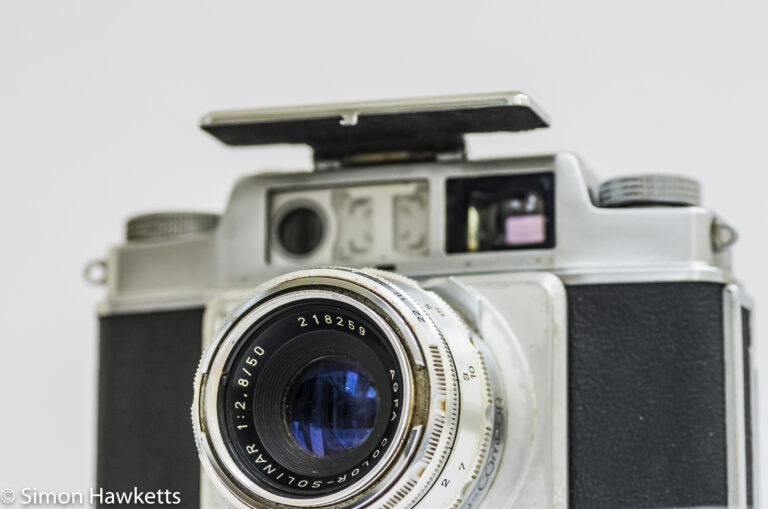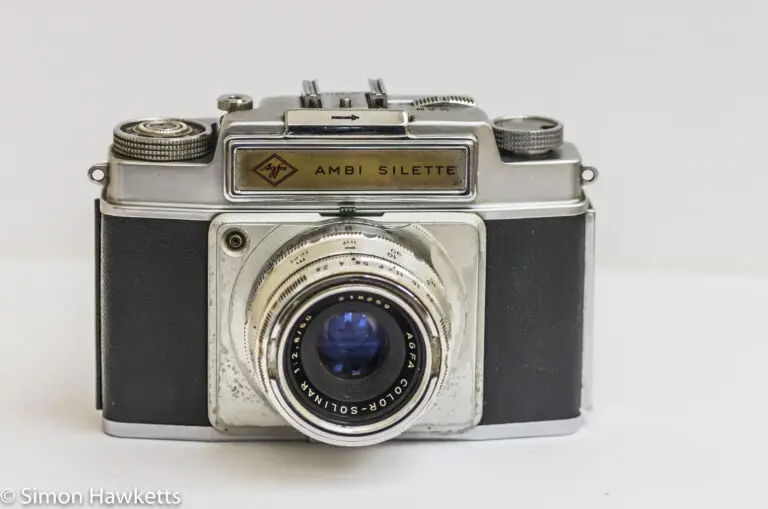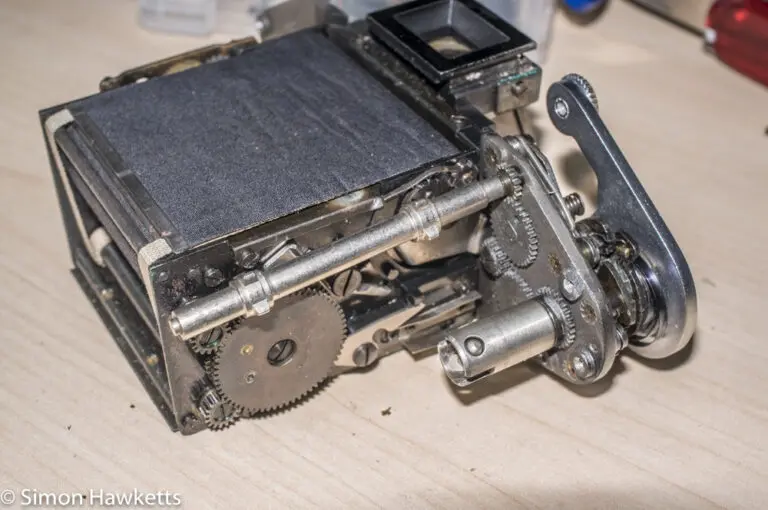Broken Agfa Color-Telinear 90mm f/4.0 aperture repair
Last year I bought an Agfa Ambi Silette 35 mm rangefinder which is unique in the silette range because it has interchangeable lenses. At the time it was manufactured, there were a series of lenses made for it, but when I purchased my camera it came with just the 50 mm standard lens.
I’ve been on the lookout for a reasonably priced copy of the 35 mm wide angle and 90 mm portrait lens, but haven’t been able to find one, until a couple of weeks ago when I found an Agfa Color-Telinear 90 mm f/4.0 lens for sale on eBay. It had an aperture problem, but because it wasn’t advertised as ‘for Agfa Ambi Silette’ it didn’t make the £40 to £60 these lenses normally make, and I got it for 99p plus £4 postage.
Agfa Color-Telinear 90mm Images
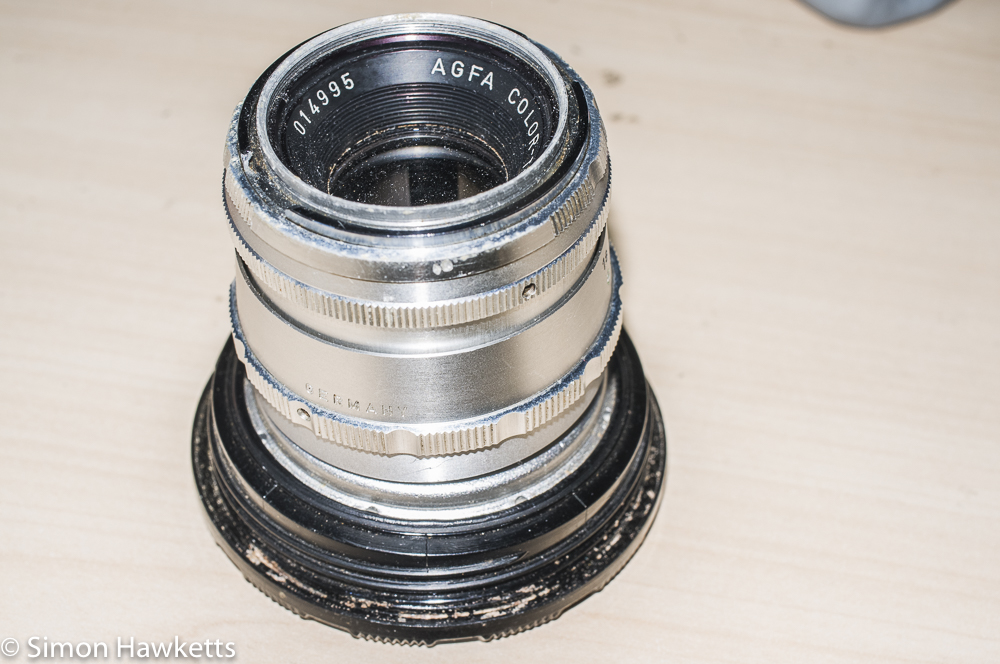
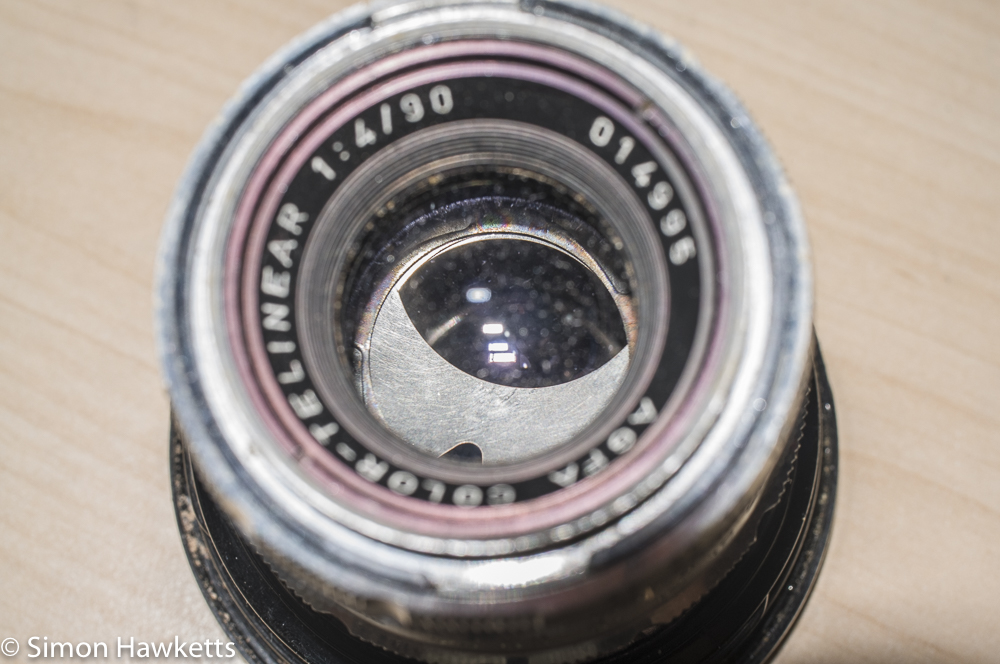
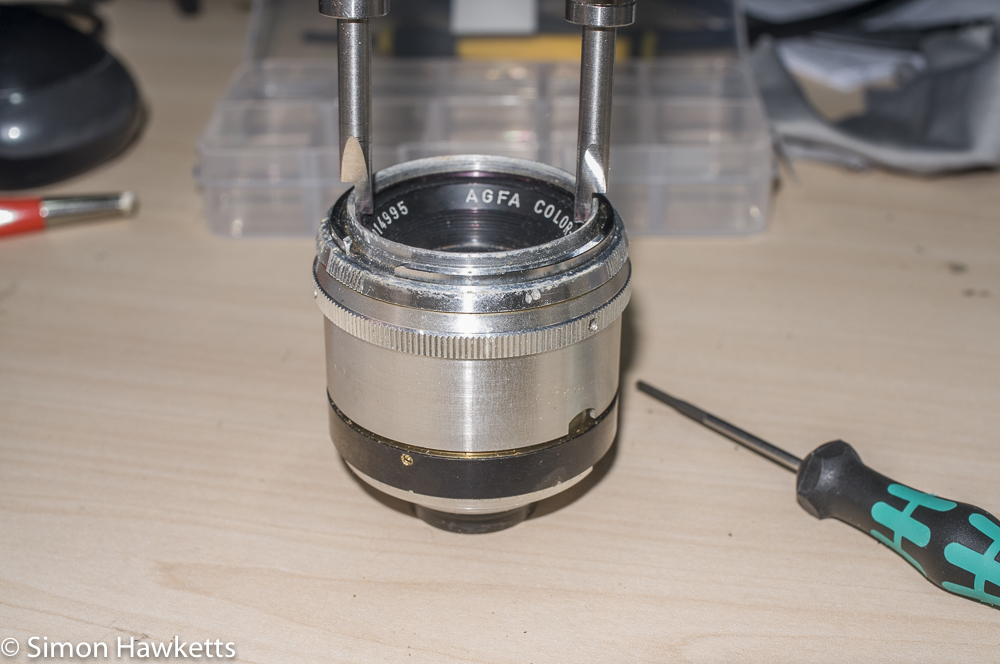

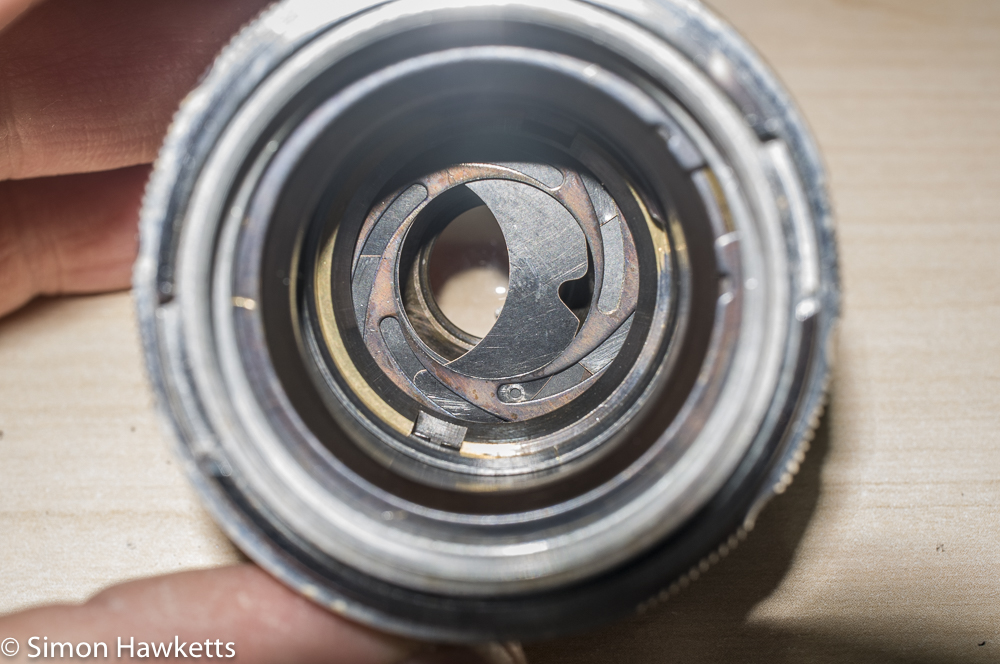

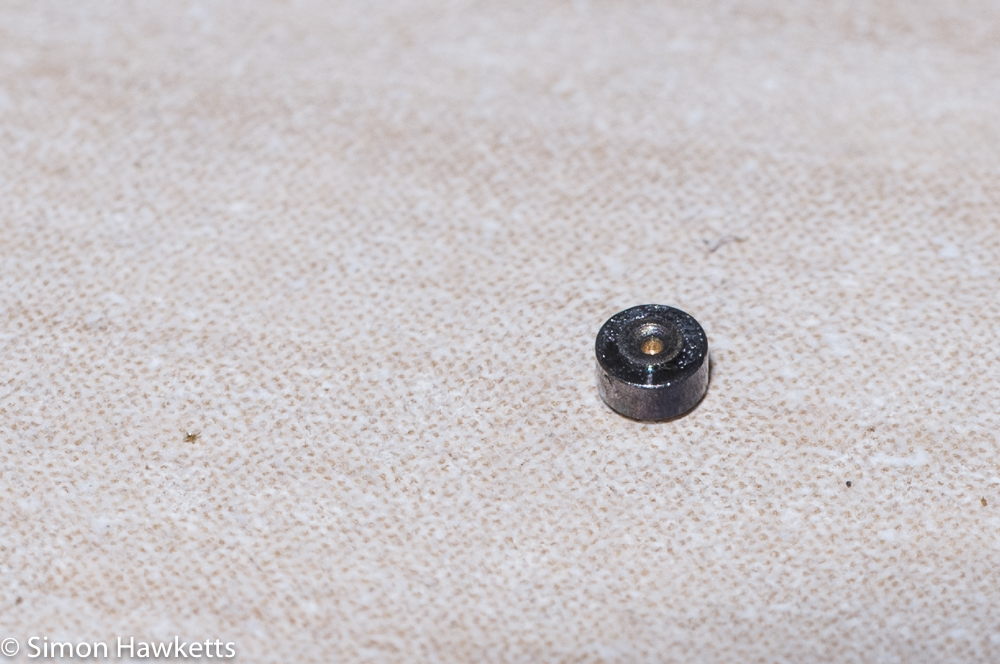
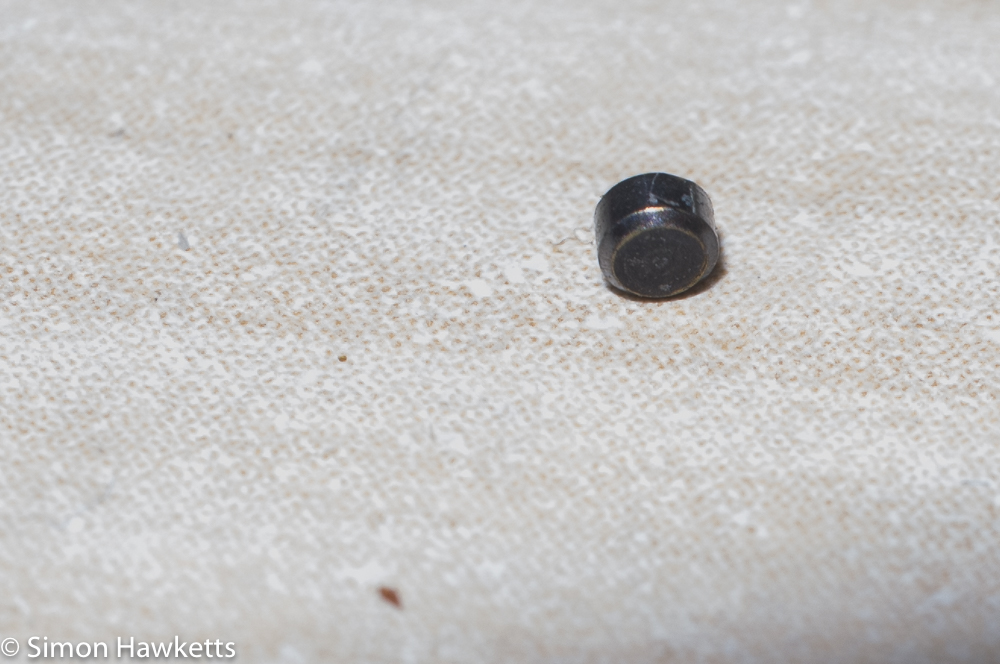

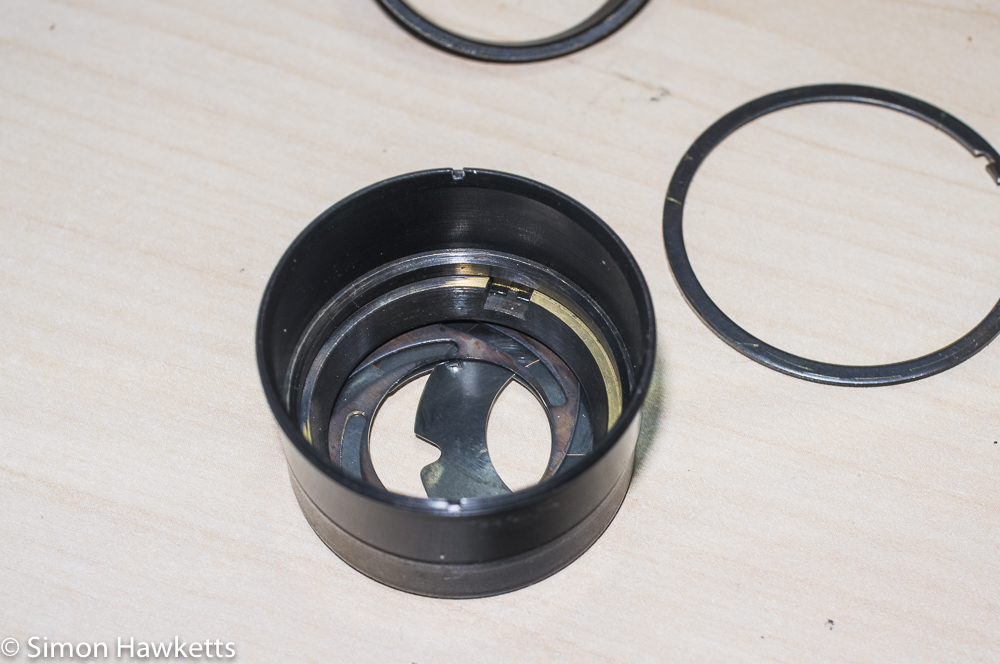
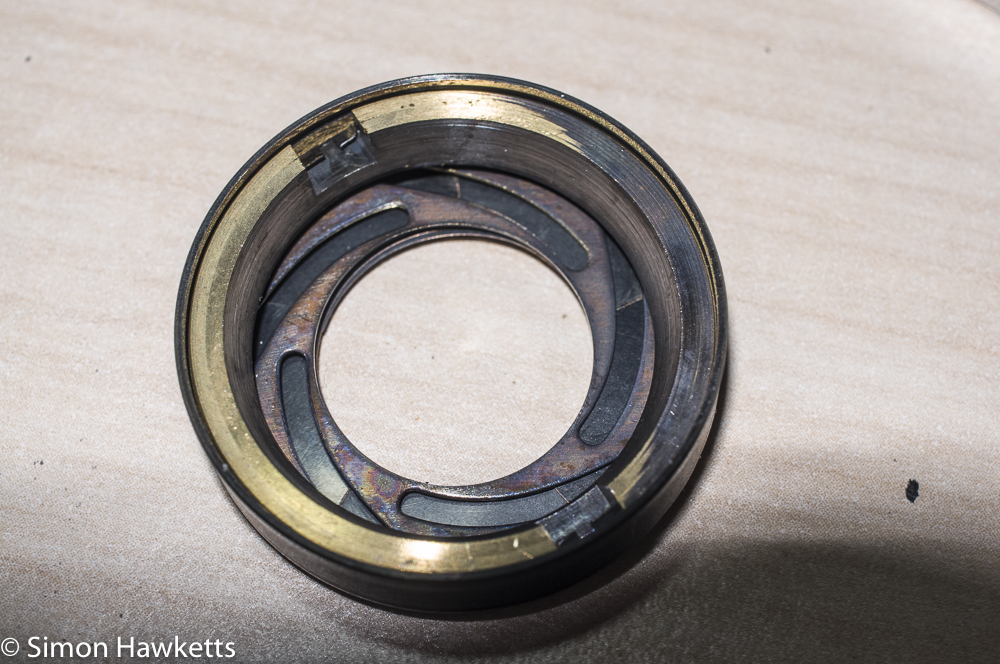
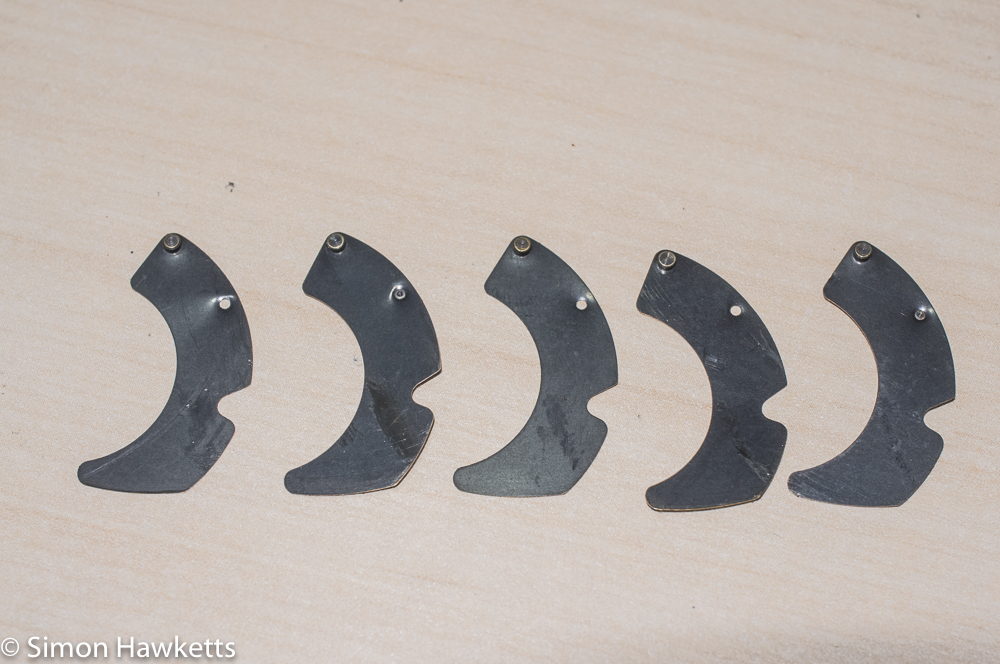

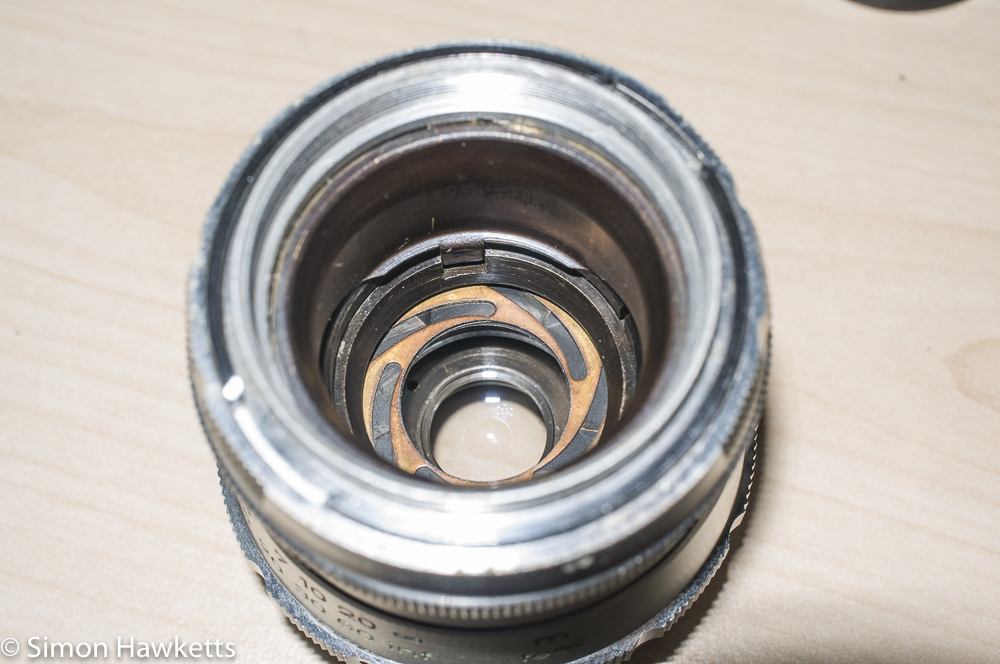
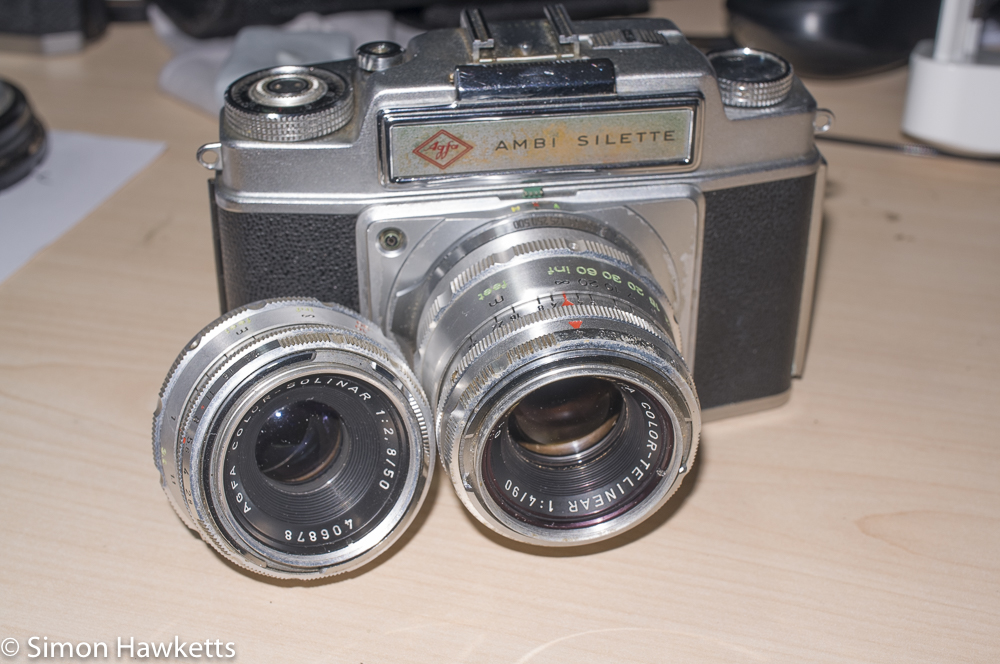
Of course, ‘aperture problem’ can cover a wide range of issues from aperture blades laying in the bottom of the lens, oil contamination, problems with the linkage between the aperture ring and the actual aperture etc. etc. As it turned out, when I received the lens it was closer to the more difficult end of the scale than a simple clean would fix.
The first thing I checked when the package first turned up was that it did have the correct fitting for an Ambi Silette. Because it wasn’t advertised as such I wasn’t certain that it would fit although from the pictures it looked right. Thankfully it is the correct lens and fits the camera well.
The other thing I was pleased about was that apart from the aperture problem, the lens is in good condition. The markings are clear, the focus action is smooth and the glass, apart from some dirt, looks pretty clean.
The next thing to look at was the aperture, and looking through the top of the lens I could see immediately what the problem was. I could see two blades which moved together as the aperture ring was rotated, but there was also one blade sitting across the opening, and it didn’t move when the ring was turned. I guessed having seen this sort of issue before, that the likely cause was the stud which is attached to the blade and moves in a slot to cause the aperture to close, was detached from the blade.
The first thing to do was to confirm the problem which involved getting the lens apart and that proved to be quite easy to do.
I initially took the focus ring off, but actually that wasn’t necessary. The way to the aperture is through the front of the lens which is achieved by removing the front element and then taking out a retaining ring and the aperture follower which transmits the ring rotation to the aperture itself. With these out I turned the lens upside down into a small plastic box and the aperture and the other parts fell out.
Along with the aperture assembly I also found three small studs, which confirmed my theory that the pins had come loose from a blade, although I didn’t expect to find three. Once I dismantled the aperture assembly and got the blades out I could see that three of the five blades were missing pins.
I now had some choices to make. I could:
- Reassemble the lens without the aperture blades and use it at just f/4.
- Repair the blades if possible, although that is quite tricky to do
- Try to find replacement blades – possibly another Agfa silette would use the same blades (not an expensive unit like the Ambi but a plain silette?)
- Throw the lens away and put it down to experience.
Of these options the ones which appealed most were to find some replacement blades or repair the current ones.
In fact, when I thought about it, I realised that I have some replacement blades – at least I possibly do. I actually own a second Ambi Silette with another 50 mm lens. I bought it as an investment because I’m sure these cameras are going to appreciate in value over the years.
I took the front element out of the 50 mm lens, and it certainly looked like the aperture assembly is the same on both lenses. It would make sense to be the same unit from a manufacturing point of view, so I worked out I have the option of dropping the aperture from my second 50 mm lens into the 90 mm lens and getting it working that way. That also leads to the possibility that another model of Silette could use the same aperture blades and it that’s so it is easy enough to find one second hand, so I could get some that way.
However, ideally I don’t want to ruin my other 50 mm lens if I can avoid it, so I decided I’d firstly try to glue the pins back into the aperture blades to see if that would fix them. I thought about using epoxy glue to hold the pins on but realized that it has a sticky surface even when set so was unlikely to work very well.
I looked on Amazon and found some special formula superglue which is specifically designed for joining metal, so I sent for a bottle of that. It’s a particularly runny glue which is designed to creep into small gaps and form a good seal and a very strong joint and can join items which are under strain, so it sounds strong enough.
In the meantime, while I wait for the glue, and contrary to what I wrote above, I’ve actually repaired my 90 mm lens by fitting the aperture from the second 50 mm. I reasoned that although it would be nice to have both 50 mm lenses in working order I’m better off with a 90 mm & 50 mm in good order and a 50 mm with a patched aperture, so I’m going to try to fix that lens when the glue turns up.
If I’m successful I’ll post the results. Meanwhile, the pictures above may be useful to anyone who has a lens from the Ambi Silette series which needs some work.
Discover more from Everything Vintage
Subscribe to get the latest posts sent to your email.

